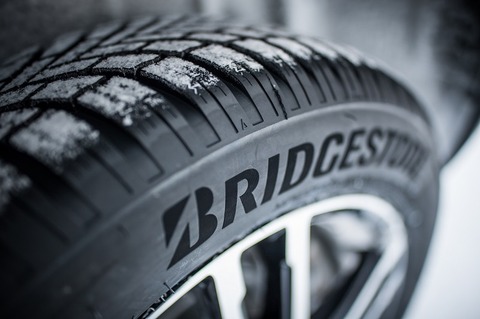Volumes decline as structural changes accelerate in automotive and tire industries
Tokyo – Bridgestone Corp. has increased annual sales and adjusted earnings slightly, helped by favourable currency impact and cost-saving initiatives of its 2024-2026 mid-term business plan.
Adjusted earnings (adjusted operating profit) rose 1% year-on-year to Yen483 billion (€3.0 billion), on 3% higher sales of Yen4,400 billion, Bridgestone reported 17 Feb.
The group’s revenue increased despite lower volumes and due mainly to “progressive improvement” in the sales mix, particularly through expanding sales channels for 'premium replacement passenger car tires.'
A stable demand for ultra-large tires for mining vehicles and a favourable exchange rate effect also helped boost revenue.
Overall, volumes declined in both consumer and commercial segments, as the group’s Latin America business deteriorated, mainly in Brazil and Argentina, impacted by the influx of low-cost tires.
Adjusted earnings exceeded last year’s levels due to the implementation of restructuring and rebuilding initiatives, improvement in sales prices and sales mix spread.
The tailwind from depreciated yen helped absorb the declines in the Latin America business and the impact of reduced unit sales.
Despite the year-on-year growth, the results were below Bridgestone’s earlier estimate in August last year.
The group linked the underperformance partially to a Yen100 billion cost recorded due to “early launch of rebuilding and write-off of production equipment of truck & bus and retail in Europe in the fourth quarter.”
According to the Japanese group, new threats have emerged in the business environment, including structural changes in the automotive industry driven by factors such as the strength of the Chinese EV market.
Furthermore, structural changes in the tire industry, such as increased imports of low-priced tires mainly to Europe and South America, have also accelerated recently.
To tackle these, Bridgestone said it has targeted improvements in management and business quality, while launching "restructuring and rebuilding initiatives" as part of its mid-term strategy.
Breaking down segment performance, the premium tire segment saw OE demand for passenger cars and small truck tires “moderate globally” as a the shift to electric vehicles slowed down.
While consumer OE demand in Asia grew marginally year-on-year, it “significantly declined” in Europe and Japan and “fell slightly” in North America.
Reflecting a shift to larger vehicles, demand for high-rim diameter tires increased in Japan and remained flat year-on-year in North America and Europe.
Demand for new truck and bus tires “decreased significantly” year-on-year in North America, Europe, and Asia, but stable in Japan.
Replacement demand for passenger car and small truck tires was “impacted greatly” by the increase in low-priced imported tires.
The higher imports, Bridgestone said, were mainly due to the lowering of import tariffs on goods from Thailand and South Korea in January 2024 in North America.
This led to a decrease in demand for tires from US- and Canada-based tire manufacturers.
Replacement consumer tire demand remained flat in Japan and Asia and increased in Europe amid a “trend of gradual market recovery.”
Demand for large-tire replacement tires continued to grow, mainly in North America and Europe.
In the truck & bus tire segment, Bridgestone said replacement demand rose year-on-year as North American retail inventory normalised in the first quarter, followed by "a gradual recovery."
In Europe and Asia, demand recovered year-on-year, while Japan remained flat compared to the year before.
For 2025, Bridgestone expects to see a 4% year-on-year increase in adjusted earnings to Yen505 billion, on 2% lower sales of Yen4,300 billion.



